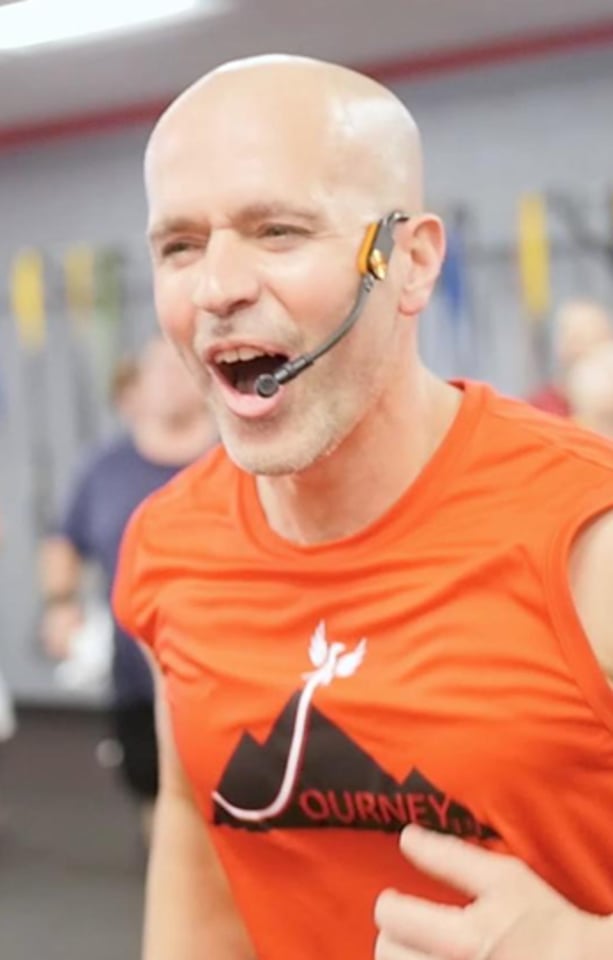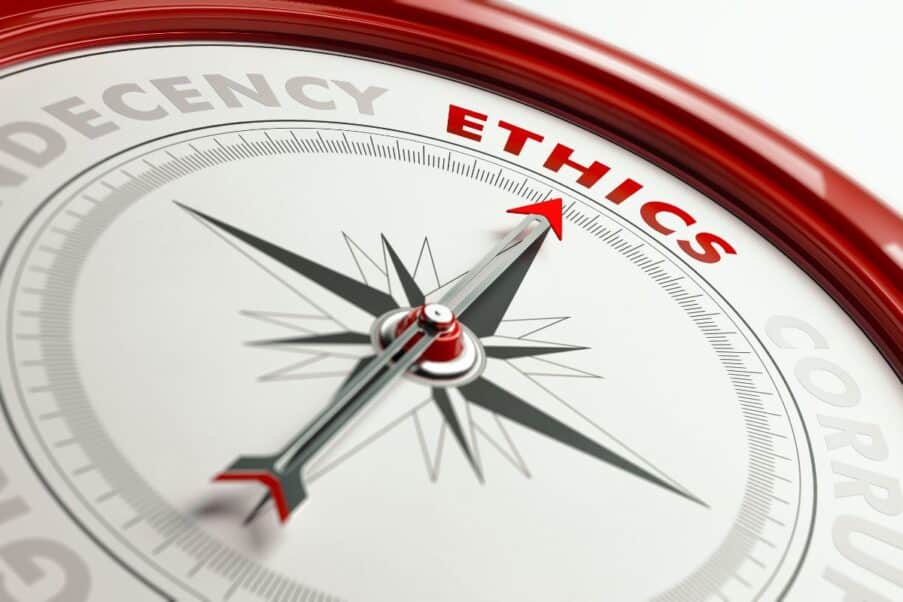21 Best Practices to Help You Survive the New Normal
Learn how three expert fitness business owners are navigating the same potholes and detours you are in this pandemic landscape.
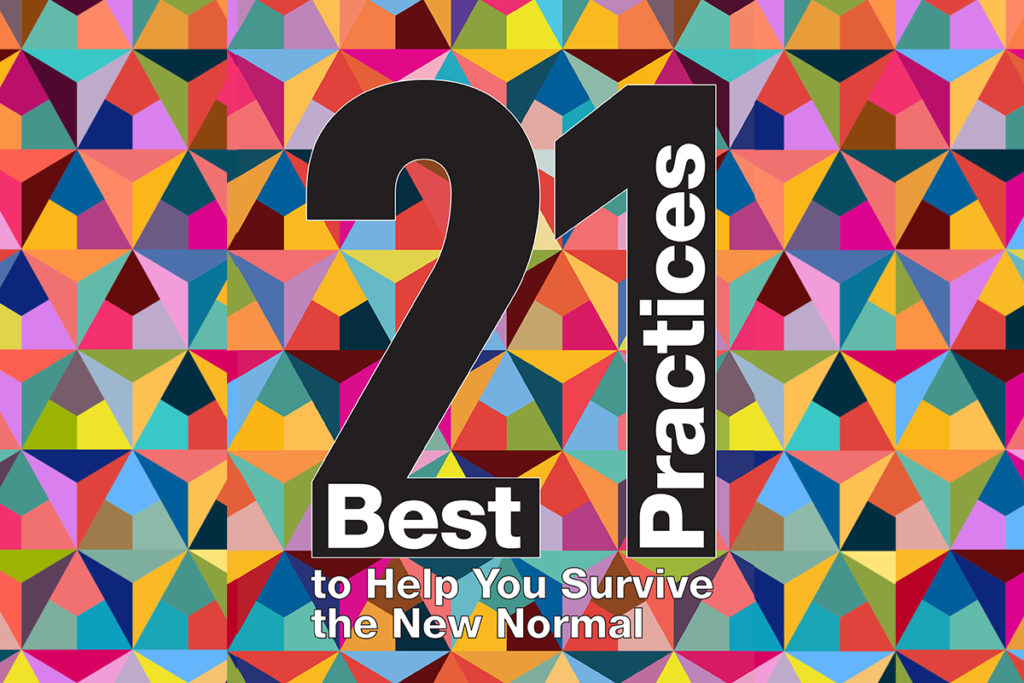
Editor’s note: The fitness industry changed in the blink of an eye when the coronavirus pandemic forced us and our clientele to “stay home and stay safe.” Clubs, studios and individual fitness professionals rose to the occasion, assessing their messaging, finances, safety policies, services and marketing approaches—and coming up with new and improved ways to serve communities. On August 21, 2020, three club and studio owners gathered for a roundtable session at 2020 IDEA® World Virtual to highlight some of the best practices that have emerged as a result.
The session was moderated by 2019 IDEA Fitness Leader Award recipient Trina Gray, and the discussion included insights from her as well as from industry experts Travis Barnes and Mark Fisher.
Below, you’ll find 21 actionable tips pulled from the session’s transcript and edited for length and clarity. We hope they serve as inspiration for you to rebuild your business better than it was in the “old” normal. To enjoy the entire recording of the session, visit pro.www.ideafit.com/pro/best-practices-in-the-new-normal.
Lessons 1–4: Massage Your Message
What you need to say and how you can say it best may have changed dramatically in the past year. These suggestions will help you shape a new approach.
1. Communicate With Confidence
“The first tip is to be in control of your communication,” said Gray. “You can reflect back on how you have been communicating, but more importantly, . . . move forward with calm and confidence in the way that you are communicating to your separate, clear audiences (your clients and your team).”
2. Read the Room (and the Psychographics)
Since the start of the pandemic, clients’ attitudes and aspirations have changed. “These are called psychographics,” said Barnes. “It was just 5 months ago that some of the strongest messaging was all based on achievement and influence and things of that type. Now the messaging that people are most responsive to is based on safety and trust and security.” His advice: Every time you communicate with clients, be sure to highlight how you are addressing these new needs.
3. Pitch Empathy, Then Business
When people are in crisis, it’s not appropriate to give a straight-up sales pitch. “You have to earn the right to talk shop with them,” Gray said. Her first post-shutdown Facebook Live event exemplified her empathetic approach: First, she acknowledged the new reality (and that it was hard), then she offered reassurance, and finally she shared her new business plan.
Gray offered her team a similar message: We’ve faced difficult times before, and we’ve made it through. “This is bigger, but it’s still just a problem that has a solution,” she said.
4. Focus on Positives, Not Politics
Gray advises against criticizing government organizations and leaders when talking to clients. “I wasn’t looking to add fuel to the fire,” she said. “I simply said, ‘This is the reality we have. This is how we are going to serve you.’”
Lessons 5–8: Look to the Bottom Line
Whether your biggest hurdle has been a temporary shutdown, reduced participation due to social distancing or a shift to online sessions only, you likely need to tighten your financials. Our experts suggest how to go about it:
5. Master Your Expenses
“I don’t think you can usually save your way to a profitable business,” said Fisher. “But the reality is if we have a lot of ‘nice to haves’ in our budget right now, now’s the time to get rid of them.”
The good news? This is the perfect time to make changes. “I have found people are very flexible here in the apocalypse,” he said. “There’s always going to be pushback to changes you make in your business, but right now, people have a much higher degree of understanding.”
6. Say Goodbye to Sacred Cows
“You cannot push, pull and drag along everything you’ve ever offered in your facility if it doesn’t work anymore,” said Gray. Barnes recommended looking for the “sacred cows” in your business: services or programs that have been underperforming or are simply impossible, given the current safety constraints. “If it’s going to make dollars, it has to make sense,” he said.
For example, Barnes once offered 90-minute sessions that included 30 minutes for weigh-ins and nutrition tips. Under scrutiny, he saw that only 20% of participants enjoyed those extras. Now he offers 45-minute time blocks, which allows him to work with smaller groups but the same number of people.
Fisher temporarily froze 3- and 12-month memberships and began offering 2-week options. “In the beginning, I was like, ‘I don’t even know if I’m going to be a zombie next week,’” he said. “‘There might be dinosaurs.’”
7. Allow People to Do Their Best Work
Making staff cuts is one of the most difficult aspects of any owner’s job. However, Fisher has come to realize this can be beneficial to all involved. “We’re doing individuals a disservice if we’re keeping them on board when we know that they’re not really doing the job that they’re capable of,” he said. “We might be preventing them from doing other things.”
This is not a subject he takes lightly. “But at the end of the day, you have an obligation to your former clients, your current clients, your future clients and the rest of your team to run the very best business you can,” he said.
8. Get Comfortable With Negotiation
Now is the time to negotiate with pretty much everybody. “I’m not suggesting you put anyone in a headlock,” said Fisher. “When we have vendors, we ideally want a partnership.” But if you’re struggling financially, he advised, it’s worth having conversations with your booking platform, your credit card processing-fees company, your landlords, your contractors and anyone else in your orbit who will benefit by helping you stay in business.
He also suggested going line by line through your statements and looking for goods or services you can cut. “Many businesses develop an unbelievable parade of these nominal $10-, $20-, $50-per-month expenses,” said Fisher. “[Cutting them] is not going to change your business overnight, but pennies do make dollars.”
Fisher also recommended these books: Simple Numbers, Straight Talk, Big Profits! by Greg Crabtree (MJ Lane Publishing 2011), Profit First by Mike Michalowicz (Portfolio Penguin 2017) and Profit First for Microgyms by John Briggs (Cherry Creek Press 2020).
See also: Crisis Leadership: Success Strategies for Today—and Tomorrow
Lessons 9–12: Safety-Check Your Facility
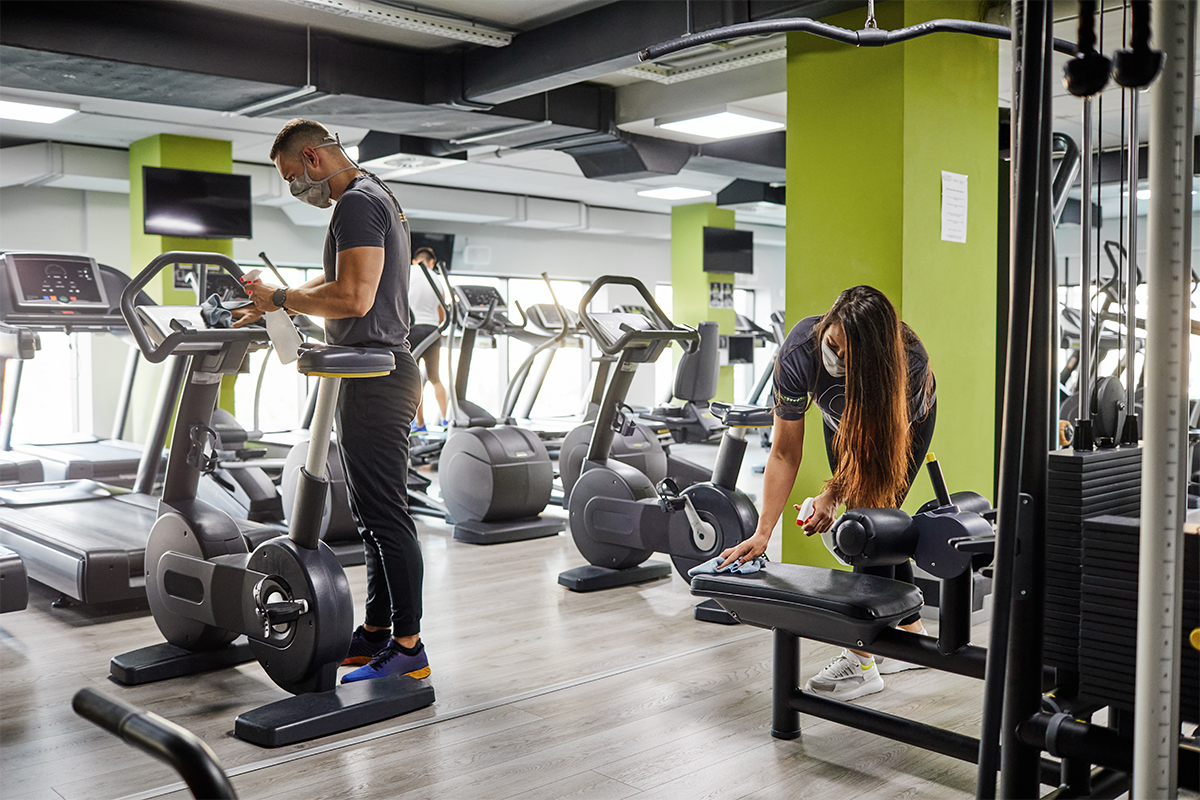
Refer to state guidelines and do a walk-through of your facility to brainstorm safety measures.
“All of our facilities are different. We’re offering different services. We have different layouts, but the questions are still the same,” said Barnes. Simply put, we all have to ask ourselves, “What will have to change?” Review the tips below to see what you may have missed.
9. Start With Your State’s Guidelines
The rules for reopening fitness facilities are literally all over the map. Different states are in different phases (which can shift), and governors set the guidelines, which can vary widely. For example, one state may require both employees and clients to undergo temperature screening when entering a gym, whereas another state may ask only staffers to do this and a third may call for remote screenings when possible.
To facilitate remote screening in his four clubs (in New York state), Barnes chose the app exercise.com, which allowed him to customize it to his brand. Other app options he named are Virtuagym Fitness Tracker and Mariana Tek.
10. Invite Members to the Planning Table
While planning a reopening strategy, Barnes sent two surveys to members. Their number-one request was simple: Offer dispensers with sanitation wipes throughout the facility. After the updates, he and his wife created a welcome-back video that thanked people for participating—and walked them through every upgrade made in response to the survey.
“I think it’s a masterstroke to actually show the survey results to your clients,” said Fisher. “[It’s] clear . . . that you’re not up on a throne, making some unilateral decisions. . . .You’re responding to what people have asked for, and I think that is awesome.”
11. Do a Walk-Through as a Member
Before state guidelines were released, Barnes did a walk-through of the facility, starting at the front door, to identify all the areas that people touched frequently as they went about their workouts. He then brainstormed possible safety measures, including both high- and low-cost options. Oftentimes, he said, the simplest were the best. For example, rather than installing an automatic door or hiring a doorkeeper, he applied NanoSeptic self-cleaning stickers to existing door handles (a 25-pack is about $100). He also used signage and tape (rather than erecting half walls) to help members with social distancing. Some of his pricier investments were hands-free devices in restrooms, electrostatic disinfection technology and ultraviolet air purification in the AC units.
12. Add Safety-Focused Merchandise
Consider what additional items your members might need in this new normal. Barnes has reminded members that they may each want to bring their own water bottle, mat, towel, mask and gloves—but he also offers many of these for sale. Sanitary mats, towels and sanitizing wipes are complimentary.
See also: Help Clients Return to Training Safely, Smartly
Lessons 13–17: Diversify Your Services
When gyms were forced to close, it hit group-ex-focused facilities particularly hard, including those owned by the panelists. This required them to create a new customer experience—fast—by finding new ways to deliver their programming. The key, said Barnes, is to focus on your purpose, not dwell on the past. “Our purpose is to change lives through fitness,” he said. “The idea of business is to see the perceived need and fill it. That’s what we need to do, no matter how we need to do it.”
Here are some ways to reimagine your offerings:
13. Embrace the Demand to Change
When the pandemic began, Barnes was offering only one format: group. “I believe it’s a prerequisite for a coach to love sweaty hugs,” he said. “And I think that getting everybody together and feeling that energy is just awesome.” The coronavirus forced him to explore new offerings, and he embraced the change. “Sometimes, there are moments like this where a change is the difference between thriving and maybe not even surviving,” he said. “You might have to be willing to destroy your business in order to save it.”
14. Keep an Eye To the Future
“I want you to create something that you feel you can stick with, even when you reopen,” said Gray, who is now offering a slew of options (Zoom, outdoor, live, etc.) Not only has she continued to make all of the coronavirus-inspired formats available since restrictions eased, but she charges the same price across the board, allowing members to access everything. “We see that the more options we put on a platter, the more people dip into the different appetizers to put together a meal,” she said. (See “What’s on Your Menu?,” below, to help you decide what to try.)
15. Provide Lower Price Points
Even if you own a boutique studio or typically serve a high-income clientele, consider offering some lower-cost options. People at all levels of the corporate world have experienced layoffs and pay cuts. That’s why, for the first time ever, Barnes is offering a $19.95 option (his previous price point was $200). For the new service, he uses his app to deliver a daily workout from his existing library of recordings.
For his part, Fisher began offering a “no-questions-asked” promo code that dropped the cost of a 14-day membership by 20%. Later, he rebranded it as a 14-day challenge for just $49 (for the exact same program), which attracted over 100 new prospects.
16. Consider Equipment Sales
Many people have begun purchasing items for their home gyms, even if they prefer in-person classes. While Fisher’s home workouts can all be done using just body weight, he said he encourages clients to use resistance bands, kettlebells, foam rollers and mats. To create a new revenue stream, he has partnered with equipment supplier Perform Better®. Now, his website links members to their catalog. Customers get a discount, Fisher gets a commission, and the supplier scores extra sales.
17. Offer Extras That Build Connections
Gray felt that offering virtual versions of her usual offerings was not enough. “You have to find ways to go above and beyond, because they’re not with you,” she said. “And even if they are with you, they’re not with you in the same way. Their life is different; they need extra.”
Many of her extras focus on strengthening relationships with members when interactions can’t be face-to-face. “To survive in the new normal, your business is fitness plus accountability and community. I think that people who try to just hold tight to their fitness offerings will lose,” said Gray. “You have to find places for people to engage with you.” (See “Easy Extras to Build Community Every Day,” page 27, for specific examples.)
Lessons 18–21: Connect With the Connectors
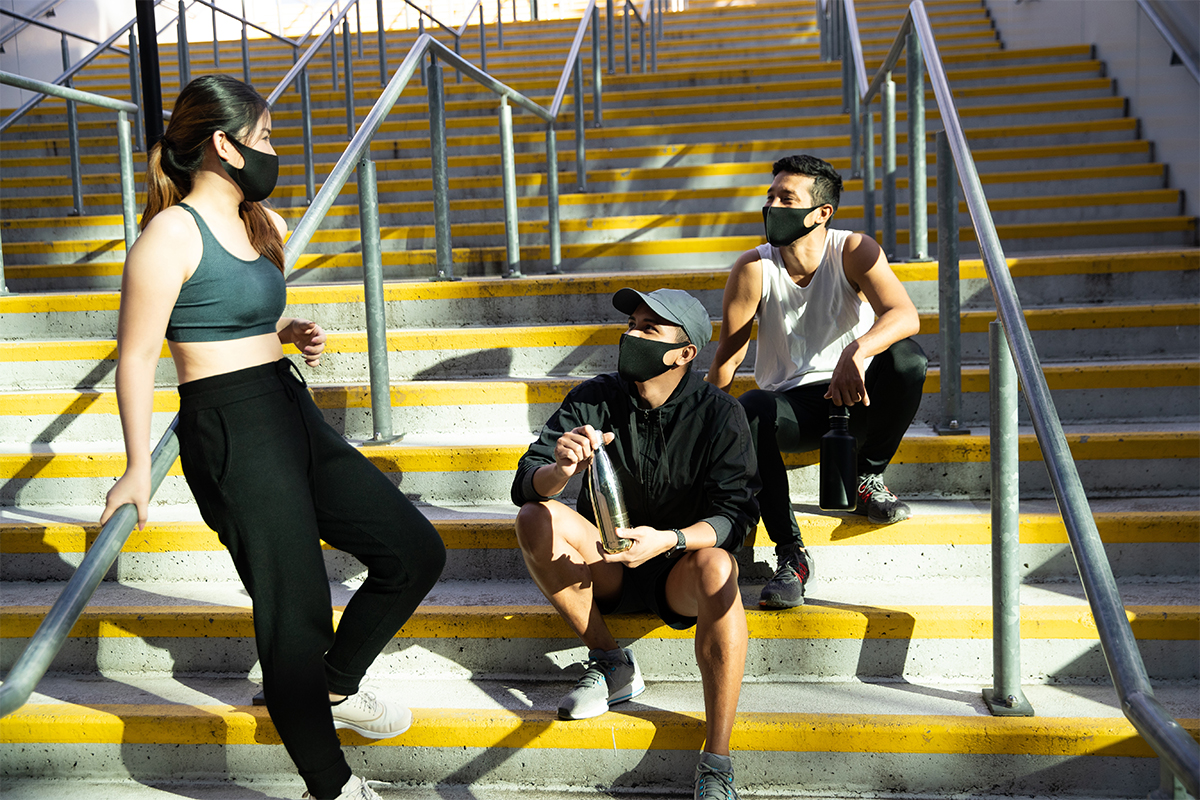
Connecting with connectors can “tip” your product or service over the edge into profitability.
Building community and connections goes beyond the traditional member-instructor or trainer-coach relationship. “The algorithms in Facebook may change, but what doesn’t change is face-to-face connection where I’m connecting with a connector, [and] they can recommend my brand,” said Barnes, who endorsed two books for those interested in this topic. The Tipping Point by Malcolm Gladwell (Back Bay Books 2002) mentions that connecting with connectors can “tip” your product or service over the edge into profitability, and The Referral Engine by John Jantsch (Portfolio 2012) notes that most of our business should come from referrals. Here are a few ideas on how to foster this:
18. Remind Former Clients Why They Loved You
People are craving normalcy and familiarity, which may help you reattract former clients. Even if they were doing well in 2019, they may now need help restarting their fitness routine, losing the “COVID 15” or making a new plan to suit a revised work schedule. One caveat from Fisher: “Inertia is the order of the day, which is to say, they’ll continue to think about it, but not quite do things.” To spur action, you can add a deadline or capacity limitation to membership trials or special offers—and be clear that there’s no long-term commitment, so you won’t scare people off.
See also: The Power of Connection in the Age of Social Distancing
19. Ask Current Clients for Corporate Referrals
Fisher’s company tagline is “ridiculous humans, serious fitness.” He never imagined his model appealing to corporate clients; however, with work-at-home programs proliferating, businesses have become more receptive to offering virtual fitness to their employees. Today, thanks to this “happy accident,” corporate programs account for more than 20% of Fisher’s revenue.
20. Form Partnerships With Local Businesses
“Never has there been a more important time to connect with other businesses,” said Barnes. “There was a time before the pandemic where they might’ve been, ‘Oh, I’m too busy for that. I’m doing so great.’ Nobody’s doing great right now. Everybody’s ready to help one another.”
Beyond partnering with equipment suppliers, think about other people in your community who might be able to recommend your business to interested consumers. (This could include healthcare providers, nutrition experts, spa workers and staff at other fitness facilities that don’t fit into your niche.)
21. Invite Members Into Your Marketing
Barnes often asks members on-site to record a quick video on how they feel about training there again. This allows them to say how clean the facility is and how safe they feel, which could ease the minds of those who haven’t returned yet. “This is your new marketing,” he said. “Because remember those words in the beginning: It is safety, it is trust, it is . . . feelings of security that people are really after right now.”
Easy Extras to Build Community Every Day
Throughout the session, the panelists shared many details on how they are doing business. Here are some extras that Gray has begun to share daily with active members on her private Facebook page.
More for Members. A team member offers a live segment, such as a morning stretch, a healthy-cooking demo, a meditation session or just a book chapter read aloud.
Fit in Five. Team members deliver 5-minute workouts—core, yoga, cardio, etc. These are recorded and added to a library, and members can mix and match them to create longer custom workouts.
The 2020 Challenge. Members aim to do 20 workouts in 20 days and also to have “perfect hydration” (this puts a positive spin on the term 2020). A daily post on Gray’s private Facebook page serves as a reminder and invites members to “comment below” if they hit their goals.
You Belong Here. Each day for 30 days, someone different is chosen to share a photo, a brief bio and the reason the person became a member. (A recent example was Joe, age 77, an outdoorsman, hunter, fisher and golfer, who began working out because he wanted his shoulders and knees to feel good.)
What’s on Your Menu?
Check this list of the options now being offered by our expert panelists, who began 2020 providing mainly group and small-group programs. The list can help you see where you are currently—and what you might want to try next.
- private training
- semiprivate training
- small-group training
- group exercise classes
- virtual classes
- virtual coaching
- on-demand classes (app or YouTube)
- outdoor coaching (private/semiprivate)
- outdoor classes (group/small group)
- hybrid (membership)
- low-priced deals or promo codes
- short-term, no-commitment offers (e.g., 2 weeks)
- a private Facebook group
- time-bound challenges
- daily posts
- short videos
- live mini sessions (e.g., 5 minutes)
- live “water break” chats with members
- individual inspirational text messages
- equipment sales (on-site)
- equipment discounts (online partnership)
Q&A: Good News for New Businesses in the New Normal
In this 2020 IDEA® World Virtual session, participants dialed in from across the nation and the world—Austin, Wyoming, Los Angeles, Boston, Canada, Mexico, South America, the U.K., etc.—to gather ideas that they could apply to their own businesses moving forward. They also posted questions for the experts. Here are a few examples.
Question: I’m opening a new gym. I see that people might be forgiving of their current gym making changes, but maybe not as forgiving of a new gym opening.
Trina Gray: I disagree with that mindset. . . . You have the advantage. You get to open in exactly the way you want to without having to disappoint anybody, because you’re opening in the way that’s safe and effective for you in these times. You get to start fresh, where the rest of us have to explain why we’re making changes. You just get to open in this new normal the way that you want to operate.
Question: What are the top two actions a personal trainer should take today to move forward in this COVID-19 world?
Mark Fisher: I have developed an obsession with maintaining a well-organized contact database of my coaching clients . . . . Even in the beginning, just making sure your family and friends know what you’re doing, I think that’s worthwhile . . . . You might not hard-sell your grandma on doing your trial offer, but the reality is your family and friends should know about what you do because they might have friends they can refer your way.
Travis Barnes: We are the average of the five people that we spend the most time with. So, determine who it is that’s doing well at what you want to do, and then figure out how to spend time with them. In fact, try to choose a few of those because you can’t have enough mentors in your life. . . . [What] you’ll find, when you get those kinds of people in your life, is that you will live in the kinds of circumstances in which they live.
Travis Barnes
"Travis Barnes is a certified personal trainer who grew his multimillion-dollar fitness company, Journey 333, to five locations in less than 4 years. He started at less than zero, building his future with an unemployment check while living in a FEMA trailer. Now, his company is known for its exemplary customer service and business systems, and he is franchising it across the globe. Travis is a co-author of two books, 52 Amazing Journeys and Journey Fitness."
Mark Fisher
Mark Fisher is an in-demand international speaker, consultant and entrepreneur. He is the co-owner of Mark Fisher Fitness, one of Men's Health magazine's Top 20 Gyms in America. MFF has two locations in Manhattan and was ranked #312 on the 2015 Inc. 500. Mark also co-founded Business for Unicorns in 2016. BFU has worked with clients like Sony Music, Sylvan Learning and the ACLU, as well as many of the leading fitness studios across the U.S. and U.K.
Trina Gray
"Trina Gray is recognized worldwide as a passionate leader in the fitness industry. She is a successful health club owner, business mentor and IDEA presenter. Trina has owned Bay Athletic Club, a medical-based health club, and Bay Urban Fitness, a large group training studio, for more than a decade. She also founded Team Rockstar Fit, an online coaching team of thousands of fitness professionals who partner with Beachbody®. She is the recipient of the first-ever IDEA Fitness Leader of the Year award, the Top 10 Small Business of the Year award in Michigan, the CEO Award from Beachbody and the Outstanding Community Service Award from IHRSA. She is a savvy entrepreneur who loves sharing business and life lessons with fitness professionals."
